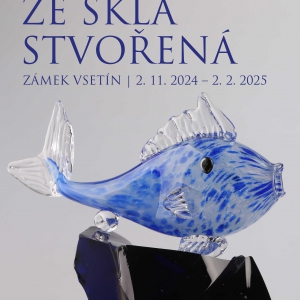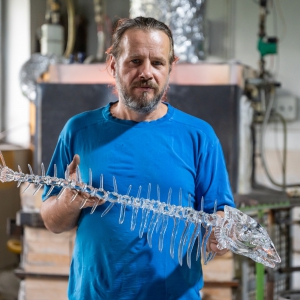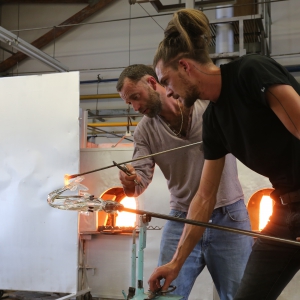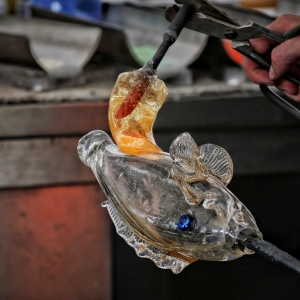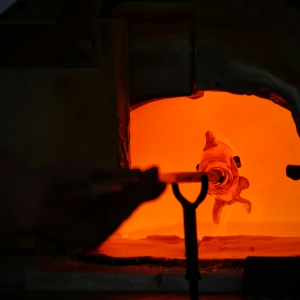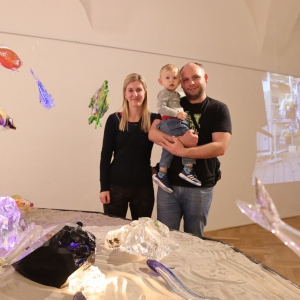
Fish as the central motif of works of art created by various glass processing techniques. This is how you can briefly summarize the theme of the new exhibition Fish made of glass, which will start on Saturday, November 2 at Vsetín Castle. The exhibition will last until February 2, 2025. You can view it every day except Monday, from 9 a.m. to 5 p.m.
Working with glass is nowadays a very rare and highly valued artistic craft. In the past, glassmaking was primarily a source of livelihood and a standard method for producing utilitarian objects. Glass, in its molten state, is a malleable material. It can be blown, molded, colored, pressed... Once it cools, it can be worked on using cold techniques. Glass can be ground, engraved, sandblasted, painted with precious metals, or decorated with brushwork. However, there are many other ways to work with glass – often forgotten, secret techniques passed down through generations.
The motif of the fish in artistic works has been present since prehistoric times and continues to accompany humanity to this day. It has carried symbolic meanings that have evolved from antiquity, through early Christianity, to Eastern cultures. In the exhibition, the fish is presented in works by Czech glassmakers, from regional artisans to those from northern Bohemia. In the interwar period, it can be found on pressed vases from the Czechoslovak glassworks in Valašské Meziříčí - Krásno, on painted glasses from the Karolinka glassworks, on grand, intricately cut goblets from small cutting workshops, in luxury sculptures by the Exbor company, or in molten glass figurines from the Železný Brod glassworks, designed by leading glass artists from the 1960s to the 1980s. Perhaps the most famous are the glass fish found on our grandmothers' shelves, made by glassmakers in nearly every Czech glass factory during their free time.
Glass fish were primarily made by glassmakers during breaks, either for pleasure or as gifts for their loved ones and acquaintances. We could humorously describe them as 'snack-time art.' Why did the fish become so iconic? Perhaps because it is a beautiful example of glassmaking, showcasing the craftsman's skill. It is adorned with many hot glass appliqués, shaped into fins using a tool called a „kaprák“ (according to the name of the typical Czech fish – carp),' and pulled into various directions with tweezers. The body of the fish was colored with glass frit or fine powder. It could also be wrapped in colored threads, which were 'combed' into an attractive, colorful pattern. In the glassworks in Vsetín, specialized in producing glass for thermos flasks, a silvering technique was used, which is why many of the fish from local glassmakers have a silvery sheen. Each glassmaker had their own style and gave the fish a unique shape, movement, eyes, or mouth. Combining craftsmanship, a naive approach, and a touch of kitsch, the glass fish became a popular interior decoration, especially in the second half of the 20th century.
MgA., BcA František Mucha
